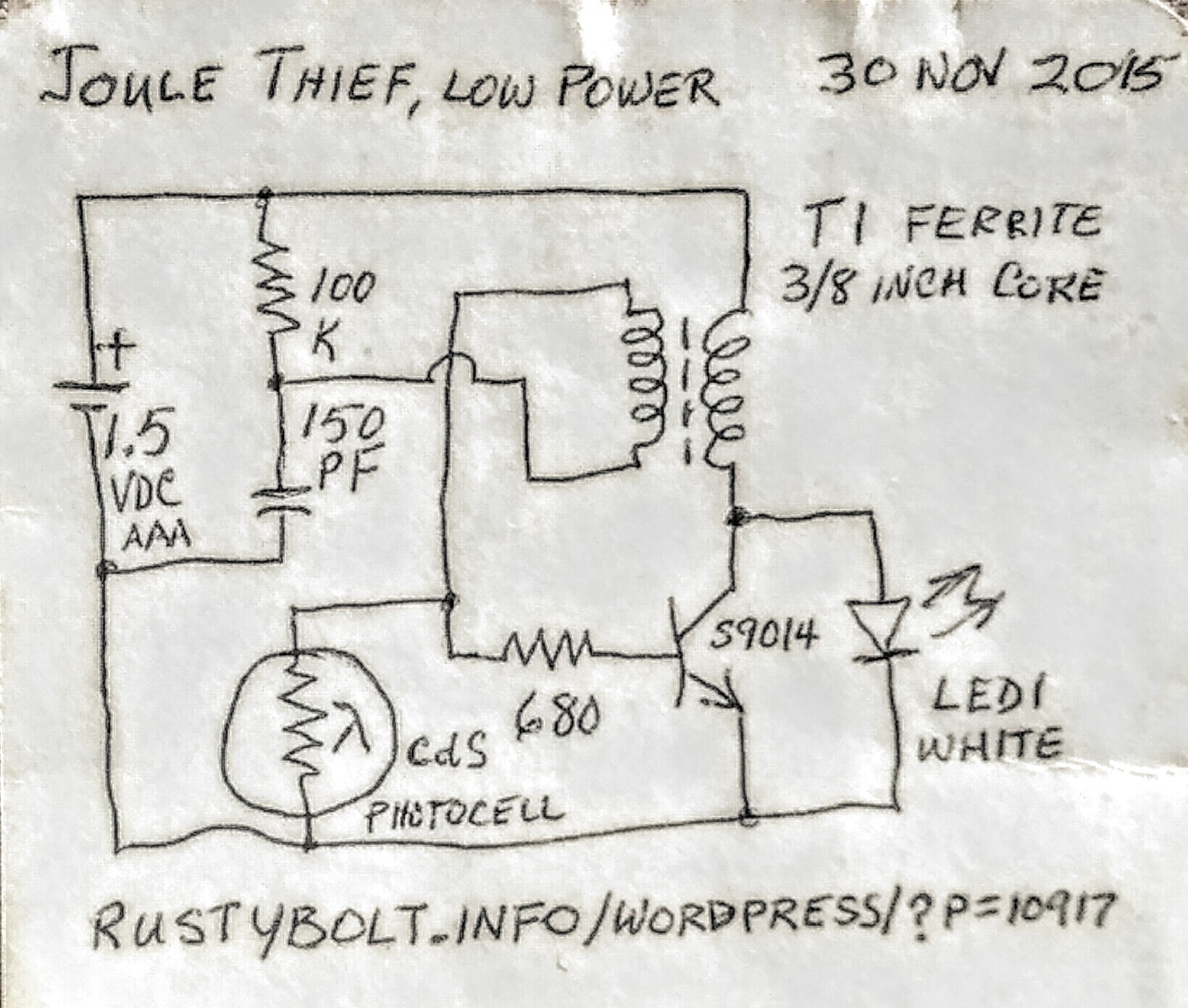This has been blogged, here and here. I added a CdS photocell (resistor with a circle around it) to shut it off during daylight, thus conserving the AAA cell. I used a 100k resistor for the base bias, so it draws very low current from the cell. I can then call this a low power Joule Thief.

The T1 ferrite toroid core is 3/8 inch or 9 mm O.D. with about twenty turns of 30 AWG wire for both the primary and secondary windings. The 150 pF capacitor bypasses the secondary winding so the high value of the 100 k resistor doesn’t reduce the feedback. The typical value for a Joule Thief is 1k.
The “high energy” aka zinc carbon AAA battery I’m using has dropped below 1.25 volts, so it doesn’t have much life left. The circuit has a lot of hysteresis. The LED will stay on until the photocell gets well lit, then it will turn off. Then to turn back on, the light has to get quite a bit dimmer than it was to turn off. The hysteresis seems to be greater than when I started, possibly because the cell voltage has dropped.
The transistor is S9014 D, which is similar to a 2N3904 or BC547, but the D on the end means it is very high gain, 600 to 1000. This is why the LED is bright even though the base resistor is 100k. A 2N3904 would put out less current to the LED with that resistor, or the resistor would have to be lowered to about 33k to get the same LED current.